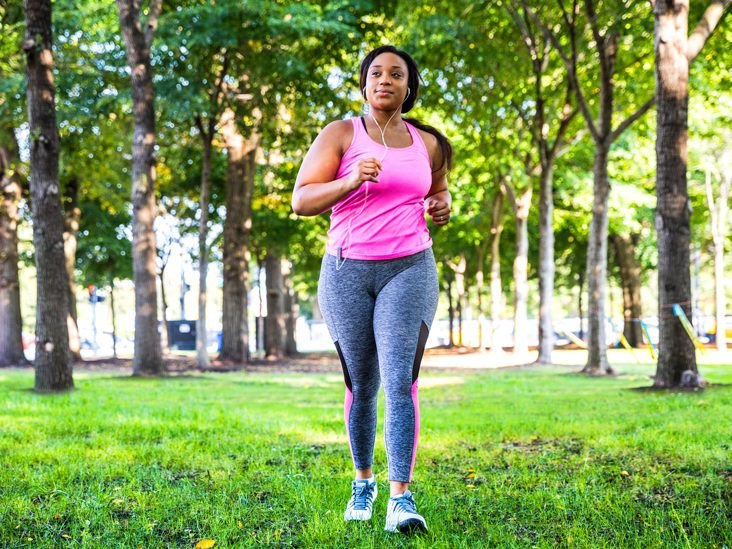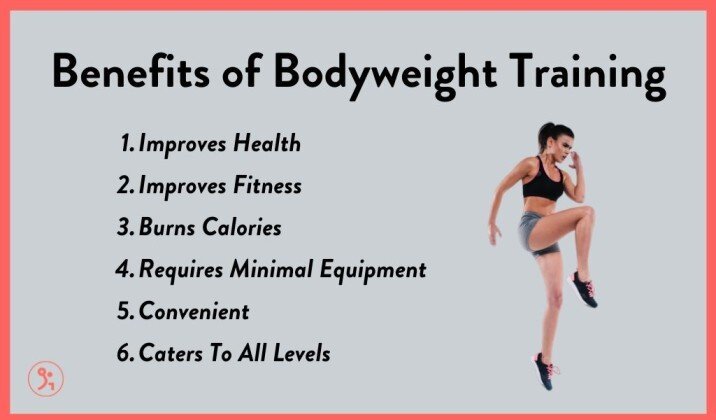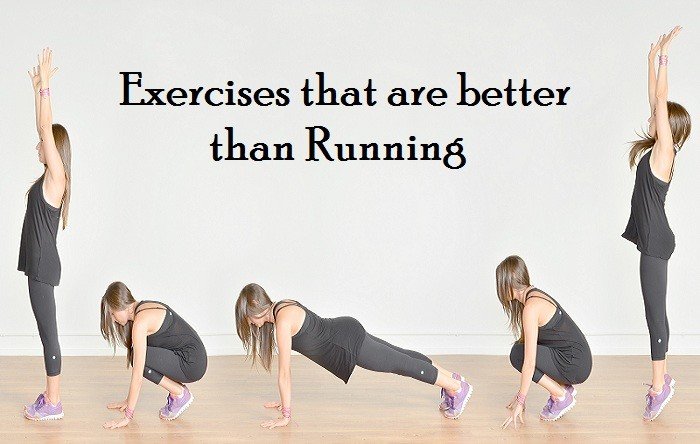Introduction to Bodyweight Exercises That Burn the Most Calories
Bodyweight Exercises That Burn the Most Calories: These workouts maximize calorie burn while requiring no equipment.
When it comes to effective fitness routines, bodyweight exercises stand out as efficient calorie burners. Using only your body weight, these exercises offer a challenging workout, making it possible to burn a high number of calories in a relatively short amount of time. For those looking to boost their metabolism, increase muscle tone, and improve cardiovascular health, bodyweight workouts are a practical and accessible solution that doesn’t require a gym.
Here, we explore the top bodyweight exercises for calorie burning, and how they maximise energy expenditure for an intense, results-oriented workout.
1. Burpees
Burpees are a full-body exercise that combines squats, jumps, and push-ups in one fluid movement. They are intense and work the core, arms, chest, legs, and back, all while keeping your heart rate up.
Burpees are also known for their calorie-burning power and can help you burn around 10-15 calories per minute, depending on your speed and form. To maximise the benefits, try doing 3-4 sets of 15-20 burpees with short breaks in between.

2. Mountain Climbers
Mountain climbers provide a great cardio workout and target your core, shoulders, and legs. This dynamic exercise is done in a plank position, engaging your abs, while you alternate bringing each knee to your chest. Since mountain climbers are performed rapidly, they burn calories and improve endurance. A high-intensity set of mountain climbers can burn around 8-12 calories per minute. To get the most out of this exercise, aim for 30 seconds of continuous movement, rest briefly, and then repeat.
3. Jump Squats
Jump squats take traditional squats up a notch by adding an explosive jump at the end. This exercise strengthens the lower body, working the glutes, quads, and hamstrings, while boosting the calorie burn due to the added intensity. Jump squats burn about 8-10 calories per minute and provide an anaerobic workout that builds muscle and power. Performing 3 sets of 15-20 jump squats with controlled form can help you build endurance and burn significant calories.
4. Push-Ups:
Push-ups might seem basic, but they’re a highly effective upper-body exercise that also engages the core. They work your chest, shoulders, triceps, and abs, which helps burn calories due to the multiple muscle groups involved. Performing push-ups at a fast pace can burn around 7-10 calories per minute, depending on intensity. To maximise calorie burn, consider adding push-up variations, such as plyometric push-ups or clap push-ups, which increase intensity and challenge.
5. Lunges:
Lunges are excellent for building leg strength, balance, and endurance. By performing dynamic lunges, such as jumping lunges, you can increase the calorie-burning effect. Lunges burn approximately 6-9 calories per minute and are highly adaptable. Try a circuit of forward, reverse, and lateral lunges to engage various muscle groups and improve your overall lower-body strength.
6. High Knees:
High knees are a cardio-intensive exercise that quickly raises your heart rate. Performed by running in place and lifting each knee toward your chest as high as possible, high knees work your core, legs, and cardiovascular system. They burn an average of 9-12 calories per minute, making them an excellent choice for a calorie-torching cardio exercise. Perform high knees in 30-second bursts with short rests for an effective workout.
7. Plank Variations:
While a static plank might not seem like a calorie-burner, adding variations like plank jacks, side planks, or mountain climber planks turns it into an intense core workout that boosts the calorie burn. Depending on intensity and variations used, planks can burn around 5-8 calories per minute. Plank variations also enhance core stability, which is crucial for overall strength and injury prevention.
Maximising Calorie Burn with HIITTo increase calorie burn, consider combining these exercises in a High-Intensity Interval Training (HIIT) routine. HIIT alternates between short bursts of intense exercise and brief rest periods, which keeps the heart rate high and maximises calorie burn. A 20-minute HIIT workout, incorporating these bodyweight exercises, can burn hundreds of calories while building strength and endurance.

Benifits
benefits, making them perfect for calorie-burning routines. Whether you’re working out at home, outdoors, or in a small space, incorporating these exercises into your routine can lead to substantial fitness gains. With consistency, bodyweight exercises can help you achieve a leaner, more toned body while promoting long-term health and fitness.
Benefits of Bodyweight Exercises That Burn the Most Calories
Bodyweight exercises offer numerous benefits that make them ideal for calorie-burning and overall fitness. Here are some key advantages:
1. Enhanced Calorie Burn:
Because bodyweight exercises often involve multiple muscle groups and dynamic movements, they can burn a high number of calories in a short amount of time. This makes them efficient for weight loss and improving cardiovascular health.
2. Increased Muscle Tone and Strength:
Bodyweight exercises engage various muscle groups simultaneously, leading to increased muscle tone and functional strength. Exercises like push-ups, squats, and lunges target muscles in the upper and lower body, helping to create a balanced, toned physique.
3. Improved Cardiovascular Health:
Many bodyweight exercises, like burpees and high knees, elevate the heart rate, improving cardiovascular endurance. This helps to strengthen the heart, boost circulation, and reduce the risk of heart-related issues.
4. Convenience and Accessibility:
Bodyweight exercises require no equipment, which makes them highly accessible for people of all fitness levels. They can be done at home, outdoors, or even in small spaces, providing flexibility and saving time on travelling to the gym.
5. Boosted Metabolism:
Engaging large muscle groups through high-intensity exercises can increase your metabolic rate, allowing you to continue burning calories even after your workout. This “afterburn effect” makes bodyweight exercises effective for fat loss and metabolism improvement.
6. Enhanced Functional Fitness:
Bodyweight exercises help improve functional strength by mimicking real-life movements. This increases coordination, flexibility, and balance, which are all essential for daily activities and reducing injury risk.
7. Supports Mental Health:
Bodyweight exercises are also known to release endorphins, which can improve mood, reduce stress, and enhance mental clarity. Regular exercise can help in managing anxiety, depression, and stress more effectively.
8. Adaptability and Progression:
Bodyweight exercises offer endless variations and can be scaled in difficulty, from beginner to advanced levels. This adaptability means you can continuously challenge yourself, progressing over time without the need for equipment.Overall, bodyweight exercises not only help burn calories but also offer a balanced approach to fitness, improving physical and mental health while being adaptable and convenient for any lifestyle.
Disadvantages of Bodyweight Exercises :
That Burn the Most CaloriesWhile bodyweight exercises are effective and accessible, they do have some disadvantages. Here are a few limitations to consider:
1. Limited Muscle Growth Potential:
Bodyweight exercises primarily use your body weight for resistance, which can limit muscle growth, especially for those aiming to build significant strength or size. Over time, as muscles adapt, the lack of added resistance may limit progress compared to using weights or resistance bands.
2. Difficulty in Targeting Certain Muscle Groups:
It can be challenging to isolate specific muscles with bodyweight exercises alone. For example, the upper back and biceps may be harder to target effectively without equipment, which could lead to muscle imbalances if not balanced with other forms of training.
3. Limited Progression Options for Advanced Trainees:
While bodyweight exercises are adaptable, advanced athletes may find it challenging to continue progressing without adding weights or increasing resistance. Once you reach a certain level of strength, it can be difficult to continue gaining muscle or strength without external load
.4. Risk of Overuse Injuries:
Some bodyweight exercises, like high-rep push-ups or squats, can lead to overuse injuries if done too frequently or with improper form. Repeatedly stressing the same muscles without variation or rest can strain joints, tendons, and ligaments.
5. Challenges with Lower Body Exercises:
For lower-body strength, bodyweight exercises might not provide sufficient resistance for some individuals, especially for those who have been training for a while. Exercises like squats and lunges can only go so far in challenging stronger legs, which could require weighted exercises for further strength gains.
6. Plateau Potential:
Since bodyweight exercises rely on body weight alone, it’s possible to hit a plateau in strength, endurance, or muscle tone if the workouts aren’t varied enough. Adding intensity and variations is essential to overcome this, but even then, progress may slow over time.
7. Requires Good Form to Avoid Injury:
Bodyweight exercises require proper technique and form to be effective and safe. Since there’s no equipment to guide movement, improper form can lead to strain or injury, especially with high-intensity moves like burpees or jump squats.
8. May Lack Motivation for Some People:
Working out without equipment may feel repetitive or less motivating for some people. This lack of motivation might affect workout consistency, especially for individuals who thrive on gym-based or machine-oriented routines.In summary, while bodyweight exercises offer great benefits, they may have limitations for those with specific fitness goals, particularly around building substantial muscle or addressing all muscle groups equally.
Conclusion:
Bodyweight exercises are an effective and accessible way to burn calories, build muscle tone, and improve cardiovascular health without the need for equipment. They offer numerous benefits, such as convenience, increased functional fitness, and the ability to work out almost anywhere.
While there are some limitations—particularly for advanced muscle growth or targeting specific muscles—bodyweight exercises remain an excellent choice for a balanced fitness routine. With the right variations and progression, these exercises can be continually challenging and provide a sustainable, results-driven approach to fitness.
For those looking to lose weight, improve endurance, or stay fit on a busy schedule, bodyweight exercises offer a versatile solution that can be tailored to most fitness levels.
you must watch 👁️👁️ this article 👇👇👇
Post-Workout Nutrition: What to Eat After Exercise for Optimal Recovery





